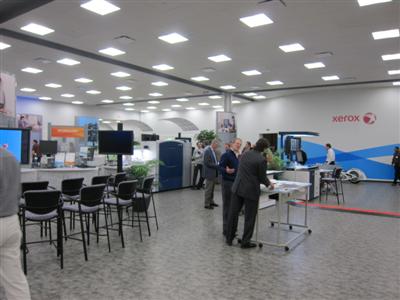Written by Dharminder Biharie
Business Development, Xerox Netherlands

Recently in Xerox Netherlands, we held a workshop titled, ‘Lean and Six Sigma = Lean Manufacturing’. Now, I know what you may be thinking. A Xerox-sponsored workshop on Lean Manufacturing may be the craziest idea you’ve ever heard of. But there is some reasoning behind this. Let me explain…
If you’ve read my previous blog posts, you know I strongly value human interactions. I spend a lot of time visiting customers. There’s always so much to discuss. I have two ears and just one mouth, so I listen very carefully. You’d be amazed at how much you can learn about your customers, their company and how they think about their business.
Today, mostly everyone in the Graphic Arts industry is feeling the same global pressure. There are companies that are seeing growth and profit, while others are fighting to keep their doors open.
How can you ensure your company more closely resembles those that are profitable? Should you develop new services and move into new markets? Should you consider a merger or acquisition?
Whatever you decide, your success will largely be determined by three things: your employees, your management team, and the interaction amongst them.
What does this have to do with Lean and Six Sigma? Believe me, Lean and Six Sigma is all about you and YOUR management skills.
During our workshop, we had a print service provider join as a guest speaker. The Royal Dutch Graphic Arts Association (KVGO) was also present to share results from a recent lean project they started one year ago.
The foundation of Lean and Six Sigma is based on theory. Lots of theory. That theory, and the information and knowledge behind it, needs to be transferred as workable, understandable instructions for your employees. This is your responsibility to manage.
One of the most beautiful ideas shared during our workshop focused on Human Resources. The output was Lean Six Sigma. Our guest speaker spoke of how in their print facility, employees are empowered to make improvements when they notice something in manufacturing that can be improved.
How does it work?
Well, when the employees in the factory (yes, it is a big plant) see that they can improve a process, they simply notify their manager. The manager will check the suggestion and then approve it as a mini-project. When necessary, the manger will assist the team.
So image how this may work in your company. I am not talking about big changes, but rather small, manageable projects. How much time should you spend with your team improving a process? (example: creating a higher output in the book line finishing with an error tolerance of 1%?)
Would it require a week? Maybe two weeks? Perhaps a handful of meetings? Or maybe a 12 slide PowerPoint presentation (ah, the kryptonite of every business!) discussing what to do?
At this specific company, the employees move from assignment to improvement in (drum roll, please), just 4 days!
How is this done so efficiently?
All meetings are done at the site of the proposed improvement, allowing real-time brainstorming and context. This eliminates the need for PowerPoint presentations, meeting rooms, or anything else that could slow down the process.
And every two months, the GM makes a tour through the production plant to hear first-hand from the employees what they have achieved.
To be honest, I was impressed with the simplicity of this process. But in the words of the facility manager: “at the end of the day, it all comes down to humans, their knowledge, and their interactions.”
If your company spends too much time smashing keys on their computer to make process improvements, it’s time to look around. There may be simpler ways to achieve process improvements.



